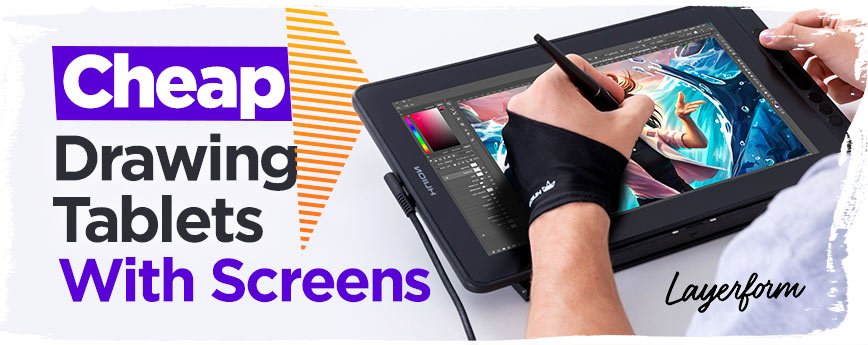
What’s the Best Cheap drawing tablet with screen?
Contents
Drawing tablets help to take your creativity and graphic design skills to the next level. Gone are the days when you needed a pencil and paper to showcase your artistic skills; infact these days with the advent of things like midjourney courses, topaz ai tools, gigapixel ai & opus clip, thing are crazier than ever in the AI space.
However, back to the subject, thanks to these innovative devices, the process is much easier and less messy, allowing you to draw directly on the screen using a digital pen. No need to struggle with an eraser; you can edit your drawings with the help of various digital tools.
The past few years have witnessed a surge in cheap but impressive display tablets by a range of brands. Whether you are a graphic designer, digital artist, illustrator, or animator, this is the best time to get a drawing tablet for your work.
The best part is that you don’t have to break the bank to grab yourself a bargain, let’s begin with the buyer’s guide:
What is the Right Size for a Graphics Tablet?
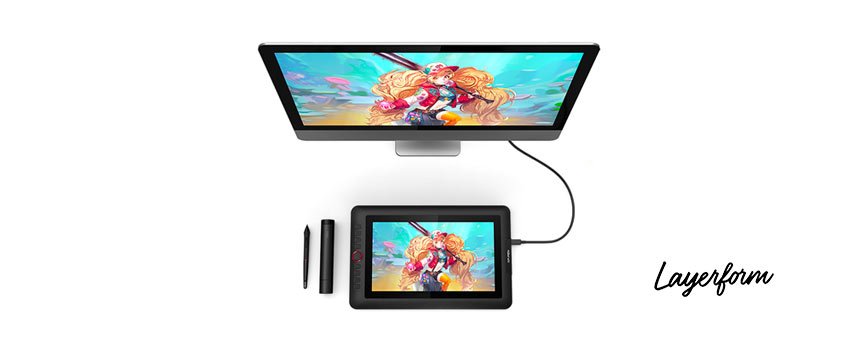
Drawing tablets come in a variety of sizes. Some can be as small as 10” while others as large as 20”, making it tricky for the uninitiated to select the perfect size for use. Generally, if you want a device that you can comfortably carry around and bring along on your constant travels, then you should opt for smaller. Ideally between the 10”-15” range.
Aside from being portable, this size is compact enough to easily fit inside a daypack and conveniently lightweight not to weigh you down. On the other hand, larger tablets are better suited for individuals who don’t move around a lot.
A 16”-20” tablet can take your creative experience to another level and make digital painting and sketching more immersive.
It ensures that you see your work more clearly and enhances your ability to pick out any errors and oversights for corrections. This means you won’t have to keep on using the zoom feature whenever you’re editing your work.
How Do I Select the Appropriate Drawing Surface for a Tablet?
The size of the tablet also affects the drawing area available. This refers to the active area on the tablet’s screen where you can draw. Normally, the active drawing area is designed with multiple sensors to detect your strokes then relay the image on to the screen.
When choosing the drawing area size, you should be careful not to prioritise its expansiveness over the quality. While a large drawing area might be more appealing, it doesn’t always guarantee you superior quality.
As such, you want to consider other tablet features (more on this below) that affect the quality of your drawing.
What is the Role of Shortcut Keys in a Graphics Tablet?
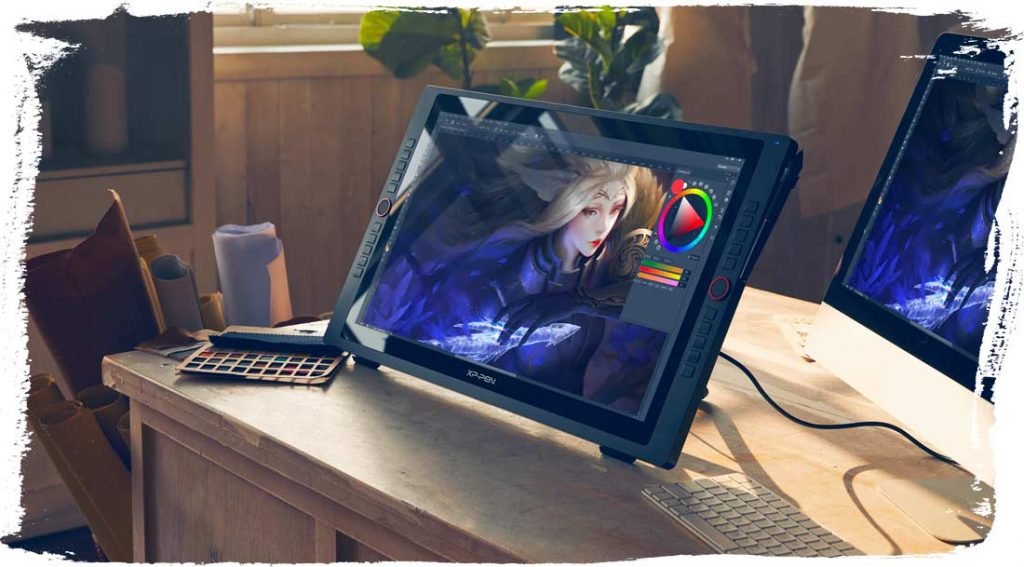
Shortcut keys, also referred to as hotkeys, essentially give you access to shortcuts to make your work more efficient. It significantly cuts the time needed to access your most frequently used tools while drawing. Nowadays, these shortcut keys are integrated into the drawing tablets while in the past, you could only access them via the PC you’re using or Mac.
To get the most out of your hotkeys, they should be customisable. This way, you enjoy the freedom to assign your preferred shortcuts for a more comfortable creative process.
Nevertheless, some tablets will automatically assign shortcuts based on how frequently you use some tools when drawing.
Overall, the benefit you get from customisable shortcuts is the freedom to add or delete hotkeys if and when needed. After all, not all the projects you take on will call for the same kind of shortcuts.
What Type of Connectivity is Appropriate for a Display Tablet?
Some drawing tablets must be connected to a PC or monitor to work. Typically, there are several ways you can do this, with the common ones being via USB and wirelessly using Bluetooth. A USB connection requires you to have a USB cable that links the tablet to the PC. The disadvantage of wired connections is that it restricts your movements.
You need to be physically close to the computer, so you are basically confined to one space; which can sometimes take a toll on some people. On the bright side, this type of connection rarely fails, allowing you to enjoy drawing with no technical interruptions.
The other connection method available to you is via Bluetooth. This comes in handy to eliminate the need for cables, leaving you with more freedom to move around and flexibility during your work. You get to move from one room to the other and change the setting, which for some artists can help to inspire creativity.
However, you can only move as far as the Bluetooth range allows before you lose the signal!
What are the best Pressure Sensitivity Levels for a Graphics Tablet?
The pressure sensitivity of a tablet is what determines the thickness of the strokes when drawing lines using a digital pen. This affects how much pressure you should exert on the drawing area to achieve the right thickness for your art. Normally, pressure sensitivity is rated between 512 and 8192 levels.
The higher the pressure sensitivity value, the more subtle the strokes when drawing. Drawing tablets come with various pressure levels, allowing you the opportunity to determine the contrast of strokes that best suit your projects. In most cases, artists find a pressure level of at least 2048 to be sufficient.
Best Cheap Drawing Tablets with Screens – Reviews
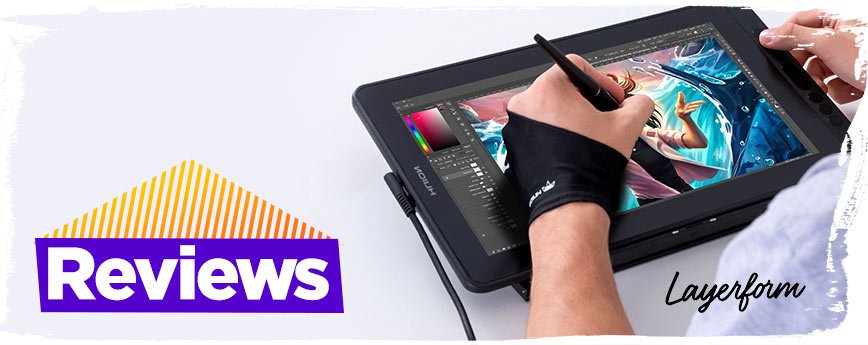
Huion Kamvas Pro 12
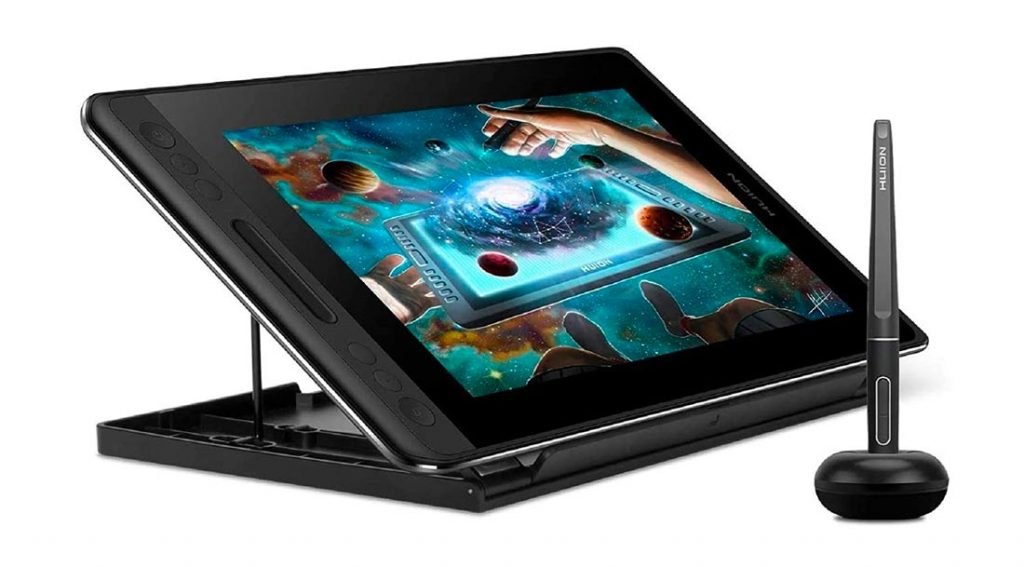
The Huion Kamvas Pro 12 is a fantastic alternative to the wacom cintiq. This device will only cost you around $200 but comes with a range of useful features to let you tap into your creative side.
Some of the distinct features on offer include an anti-glare glass layer that protects it from damage. Durability tests have shown that the Kamvas Pro 12 can handle rigorous impact and use without deteriorating in performance.
The 11.6” display on this graphics tablet impresses with a ton of functional features. It boasts auto-toned visual colors and graphics to make for more detailed images without any distortion or color dullness.
Its HD screen provides unrivaled clarity, allowing you to review every single detail in your art to deliver the perfect job. You will enjoy the 4 customised shortcut keys on offer, which allow you to zoom in and out of your drawings whereas touch bar options provide you with easy navigation for an enhanced user-interface.
The Pro 12 comes with a PW507 digital pen that has a pressure sensitivity level of 8192. This means you don’t have to use too much strength to get the desires boldness in your strokes and the 60-degree tilt specifications make the drawing experience even more satisfying.
It feels natural in your hand and offers full access to different pen controls, allowing you to make the most of its usability.
The stylus is not powered by a battery; hence it doesn’t require constant charging. This means you get to channel all your focus on the drawing without worrying about the pen.
Additionally, this tablet is compact and lightweight, making it a great choice for creatives who are always on the move looking for inspiration. It is also compatible with windows 7, 8, 10, Mac OS X version, as well as other digital art software. Lastly, the package features adjustable legs that can fold at a 19-degree angle.
Wacom Cintiq 16″

If you are the kind of creative who thrives in a natural and effortless art creation process, then you should give the Wacom Cintiq 16 a try! The tablet features a screen size of 15.6”, which is the sweet spot for drawing tablets. This lets you enjoy a seamless creative process once you put pen to screen.
The Cintiq is a great choice for students and other aspiring digital artists because it gives you the freedom to bring to life the creative thoughts in your head without posing any hurdles or restrictions.
The display features a vibrant 1920 x 1080 HD screen resolution to make for clear images and a pleasant viewing experience. It comes with a Wacom Cintiq 6 Pro pen 2 that offers amateur graphic designers a comfortable drawing experience. The digital pen is pretty ergonomic and feels like a natural pen when drawing with it. This allows you to create flawless and smooth artistic illustrations.
Thanks to the tablet’s 8192 pressure sensitivity, even the slightest pen movements can be deduced by the screen, which lets you achieve the perfect strokes without trying too hard.
The pen’s reliable grip gives you full control of the drawing process while Electro-Magnetic Resonance (EMR) eliminates the need for battery power so that you don’t need to be charging it after a few hours.
Overall, Wacom tablets are extremely convenient and this is exactly what you get from the Cintiq 16. It can connect to your PC via Windows or Mac OS software. Alternatively, you can use a 3 in 1 HDMI cable to connect and the tablet supports various digital art software, including Adobe Suite, Autodesk Sketchbook, Corel Suite, Clip Studio Paint, just to name a few.
Finally, it is delivered with adjustable and foldable leg support to enhance your flexibility and help you achieve the most comfortable drawing position.
Wacom DTC133W0A One Digital Drawing Tablet

The Wacom One is a dream come true for a beginner looking to bolster their digital art skills. Its medium-sized 13.3” screen is just perfect for amateurs, and so is the Wacom One pen that comes with the tablet. You’ll also like the lightweight and compact design, which gives you a comfortable time when carrying it. The display is beautiful and perfect for use for inexperienced creatives.
The Wacom One features natural-surface friction, which makes you feel like you’re drawing on paper. This ensures that your transition to digital art is natural and seamless.
It impresses with minimal parallax to ensure that you get your drawing accurately. Furthermore, the response time is a respectable 26ms, making for a smooth creative experience.
Users will appreciate the limited free access to a range of graphic design software programs such as Adobe Photoshop, Bamboo Paper Pro, Lightroom, and Clip Studio Paint Pro.
With these, you have more than enough tools to maximise your potential as a digital artist, as well as the freedom to experiment with all manner of digital tools. It is a nice way for a beginner to develop new techniques and improve their skills.
On the downside, the Wacom One is not a standalone tablet, hence it must be connected to the OC at all times to function. Nevertheless, the multiple connectivity options it offers are a great consolation for those who like flexibility. Apart from USB and HDMI cable connections, you can link it to your computer using specific Android devices with the help of a third-party adaptor.
Huion KAMVAS 20 Drawing Tablet
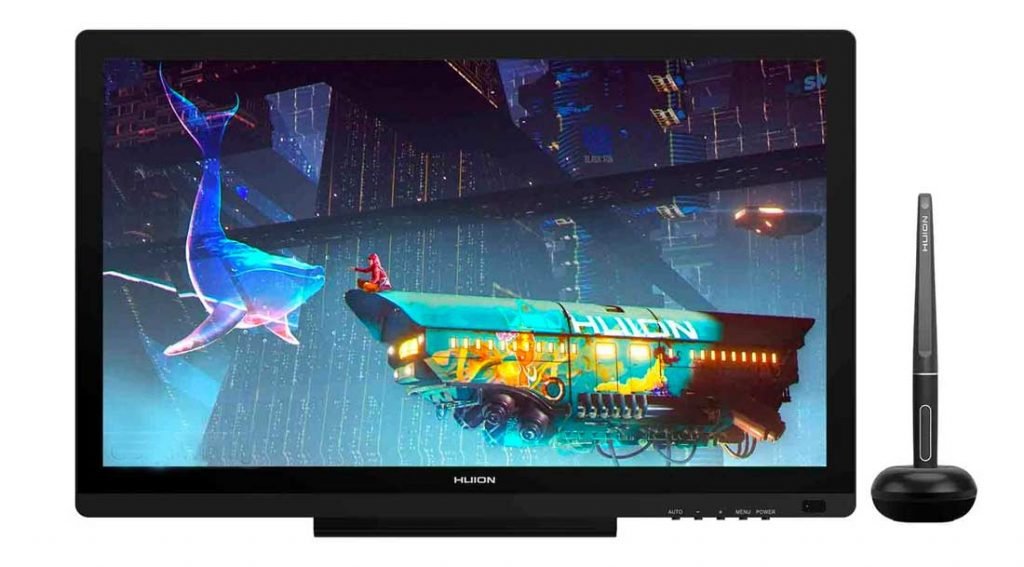
Large screens tend to make digital art a more convenient process. They offer you a more detailed view of the images you’re drawing and allow you to make the necessary changes without having to use the zoom feature. This is why many artists prefer the Huion Kamvas 20 Drawing tablet. It comes with a huge 19.5” screen to make for a seamless drawing experience.
The tablet comes with a handy stand that can be adjusted from 20-80 degrees, allowing you to achieve the perfect drawing angle. Thanks to the IPS display used, you are assured of a wide range of viewing angles.
While you’ll get a slight degree of parallax, this is barely noticeable, so no hurdles during your drawing.
It also features a fast response time of 25ms. There is no lag whatsoever between when you draw and when the strokes appear on the screen. Regrettably, the Kamvas 20 is not a standalone tablet, which should restrict your movements when using it to draw.
You can connect it to your laptop or PC using a USB, HDMI, VGA, or DP cable for maximum connection flexibility.
Lastly, this drawing tablet is paired with a battery-free PW507 stylus with tilt recognition. This is easy to use and boasts a pressure sensitivity of 8192. Furthermore, the Kamvas 20 is compatible with Windows 7 or later, as well as Mac OS 10, 12, or later.
Xp Pen Artist 13.3 Pro
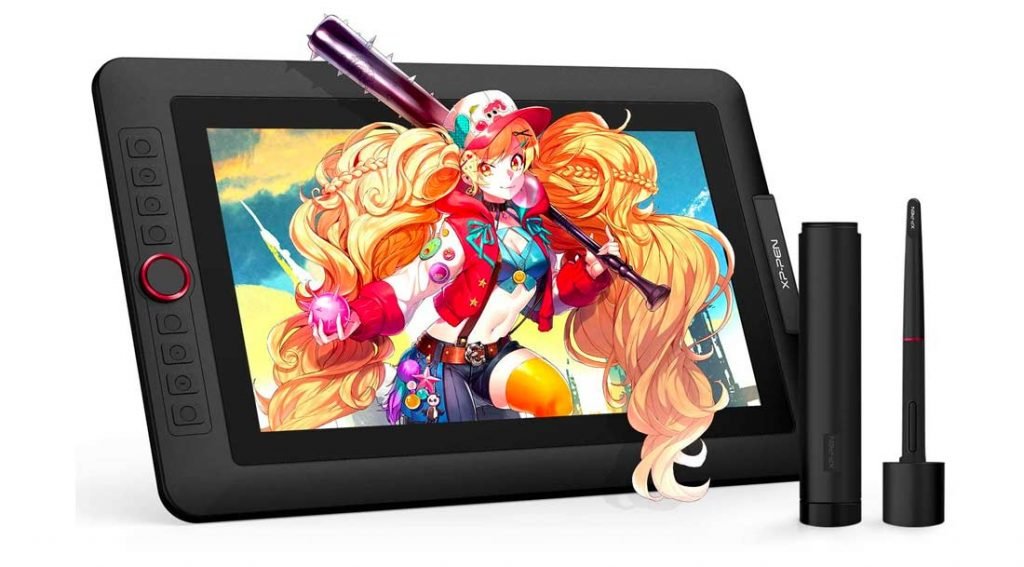
The XP Pen Artist is a great budget option for a drawing tablet that comes with an array of useful features, including a nice 13” full HD display. This can support 123% sRGB color space for clear and well-detailed images. Furthermore, the screen is laminated to ensure you don’t experience any parallax.
The tablet is built with high-quality in a well-thought-out design to offer strong and durable performance.
The extra glass on top of the screen helps to reduce glare while making scratch-resistant. One of the best features on the Xp Pen 13.3 is the arrangement of 7 shortcut buttons along the dial, which provides you with easy access to different tools for a smooth drawing experience.
The Red dial is a crucial shortcut feature, which performs tasks like zooming, panning, scrolling, as well as changes the size of erasers and brush es by simply rotating it. A battery-free passive stylus is paired with the Xp Pen to offer uninterrupted drawing. This is ergonomic and feels comfortable to grasp, even while working on extended drawing projects.
The stylus also features an impressive 8192 pressure levels to go with a well-balanced pressure curve, as well as accurate pen tracking. Overall, this tablet allows you to make the most of shortcut keys during your digital art process for a joyous experience.
Conclusion
If you are an amateur graphic designer trying to improve your digital art skills, getting a drawing tablet is the first step to becoming a pro. Luckily there are many cheap devices available on the market to give you a soft landing into the digital art space.
Make sure you watch out for the above-reviewed best cheap drawing tablets with built in screens when you finally decide to get one!
FAQ
How Does a Drawing Tablet Differ from a Graphics Tablet?
A graphics tablet does not come with an actual screen, Rather, it has to connect to a separate monitor to function, usually a PC or laptop. Anything you draw on the tablet is projected onto the PC’s monitor in real-time.
Although they are gradually becoming out of date, graphics tablets tend to be shock-proof and rarely suffer damage, proving to be long-lasting.
On the other hand, a drawing tablet comes with a fully-functional onboard computer, as well as a digital screen where you can draw and see the image in real-time. Drawing tablets are the more contemporary gadget for digital artists and provides the perfect canvas to sketch and draw. Unlike graphics tablets, they are easily damaged and more expensive.
Are Graphics Tablets a Necessity for Graphic Designers?
Graphic designers don’t need a graphics tablet. They can do just fine with a mouse and keyboard. Nevertheless, a drawing tablet is a more apt device that makes the creative process much more seamless for designers.
This is especially true for artists that are used to drawing on paper. It gets much easier with a drawing tablet!
Why are Drawing Tablets Hard to Used to?
The transition from drawing on paper using a pencil to drawing on a tablet using a digital pen involves a significant learning curve. Drawing on a slippery glass surface can be quite a challenge for first-timers and a totally different experience from what you get from a pencil and paper. It takes some time to get used to but eventually proves to be a simpler process. Furthermore, it allows for more detailed drawing and makes reviewing your work a more pleasant experience.
How Durable are Drawing Tablets?
Overall, various factors determine the shelf-life of a drawing tablet. Firstly, the quality of the tablet is one of the major influences; the cheaper it is, the shorter it will last. Another factor is how often you use the tablet. If you put a lot of man-hours into drawing on the tablet, then chances are you’ll be reducing its durability.
Maintenance is the other factor that comes into question. If you keep on dropping your device now and then, then it‘s only a matter of time before it goes off for good.


